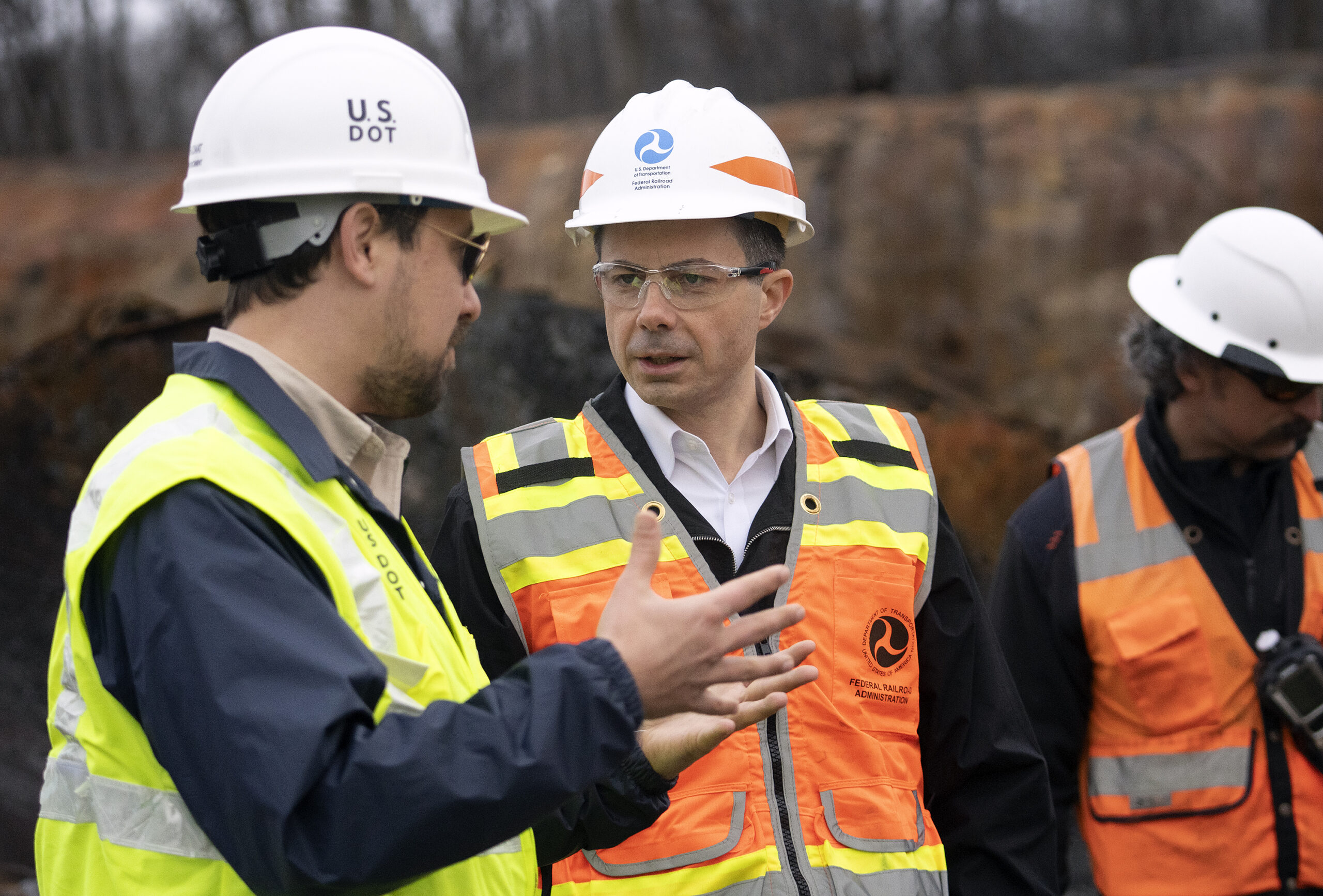Blame the Science
The EPA appeals to “the science” in East Palestine. Will it work?

The Environmental Protection Agency says the air and water are safe in East Palestine. Pete Buttigieg came to town in a hard hat, and voila—the worst of the problem is over.
Residents aren't so sure. For one thing, chemicals ooze when you press on the town's creek beds. For another, independent investigators found higher-than-normal levels of nine toxic chemicals in the town's air. Several residents have developed rashes and respiratory issues. Others complain their water smells at night.
EPA Administrator Michael Regan is asking them to trust the agency anyway.
“As a father, I trust the science," Regan said. "I trust the methodology the state is using."
Maybe Regan really trusts the science. It'd be nice to see him take a swig of the town's tap water, just to be sure. But can you really blame the residents of East Palestine for being skeptical?
One thing we've learned about "the science" over the past three years is that it has a strange habit of mirroring the imperatives of the Democratic Party. Early in the pandemic, in the name of "public health," elected officials shut down religious services and called weed dispensaries "essential." You couldn't bury your grandfather in California, but you could stand arm-in-arm in a sweaty mob to protest white supremacy. Racism, like Covid, was a public-health emergency.
"The science" on masks followed a similar path. At first, the scientists said masks didn't prevent transmission of respiratory viruses. Then, they said masks do prevent transmission—they had only lied about it to save masks for health workers. Then, after misleading the public, the scientists insisted your child mask in school. (If he had a speech impediment, he'd have to wear it in speech therapy, too.) Now, we know it is unlikely the masks did anything at all.
Then there is the lab leak. This week, the Department of Energy became the second federal agency to conclude that SARS-CoV-2, the virus that causes Covid-19, likely originated from a Chinese laboratory.
For almost two years, you weren't allowed to make that argument out loud. People in positions of power regularly appealed to the "scientific consensus" to dismiss the lab-leak theory out of hand.
In 2020, a group of scientists published an open letter in the Lancet arguing that promoting the lab-leak hypothesis did "nothing but create fear, rumours, and prejudice." (We later learned the letter was drafted by Peter Daszack, whose EcoHealth Alliance had funded coronavirus research in Wuhan.) Then, the Proceedings of the National Academy of Sciences claimed many arguments for the lab leak theory were littered with "racist tropes," and a New York Times reporter said the theory had "racist roots." Tom Cotton speculated that the virus could have emerged from the Wuhan Institute of Virology, and the Washington Post accused him of "repeating a coronavirus conspiracy theory that was already debunked.”
The lab-leak theory, of course, had never been "debunked." While SARS-CoV-2 shares some characteristics with zoonotic viruses, the infected animal or animals supposed to have passed on the virus at the Huanan wet market is yet unfound after a years-long search. And Wuhan, China—ground zero of the pandemic—is home to one of fewer than sixty-five virology laboratories in the world and one of only two in China that handles lethal airborne pathogens.
Why did supposed experts so confidently dismiss the possibility that the virus emerged from a lab so close to the outbreak? It's straightforward, actually: They didn't trust regular people to behave themselves if the lab-leak theory were true.
Bring yourself back to the beginning of the pandemic. Nancy Pelosi had gone to Chinatown in an attempt to preemptively ward off anti-Asian sentiment. Donald Trump was calling the virus the "China virus." We were told that by doing so, Trump had activated the deep, dormant racism of his supporters.
A months-long freakout about "Asian hate" followed, and though many of the perpetrators were not what we would typically think of as Trump voters, Trump and his "China virus" rhetoric were blamed for the supposed increase in anti-Asian violence. The scientific establishment thought that if they admitted the possibility of the lab leak, Donald Trump's supporters might respond with indiscriminate acts of violence against Asian Americans. CNN's Jill Filipovic summarized the thinking clearly: "Trump's racist 'China virus' bulls***, which resulted in lots of anti-Asian bigotry and attacks on Asian people, put liberals understandably on the defense against any theory that seemed to blame China for Covid."
If you bought the lab-leak theory, you were blaming China for the pandemic. And if you blamed China for the pandemic, you might unleash the public's pent-up nativism and bigotry. They might even intern Chinese Americans.
So, really, it is the public's fault. If the rubes wanted the truth, they should have been more virtuous. Medhi Hasan put it plainly: "Blame the conspiracy theorists."
Subscribe Today
Get daily emails in your inbox
That is one view. Another view is that people are entitled to the truth. Defenders of "the science" have shown little interest in the latter.
People can sense when they're being held in contempt. They don't much like it. For that reason I doubt Michael Regan's appeal to "the science" will land with the residents of East Palestine.
Comments